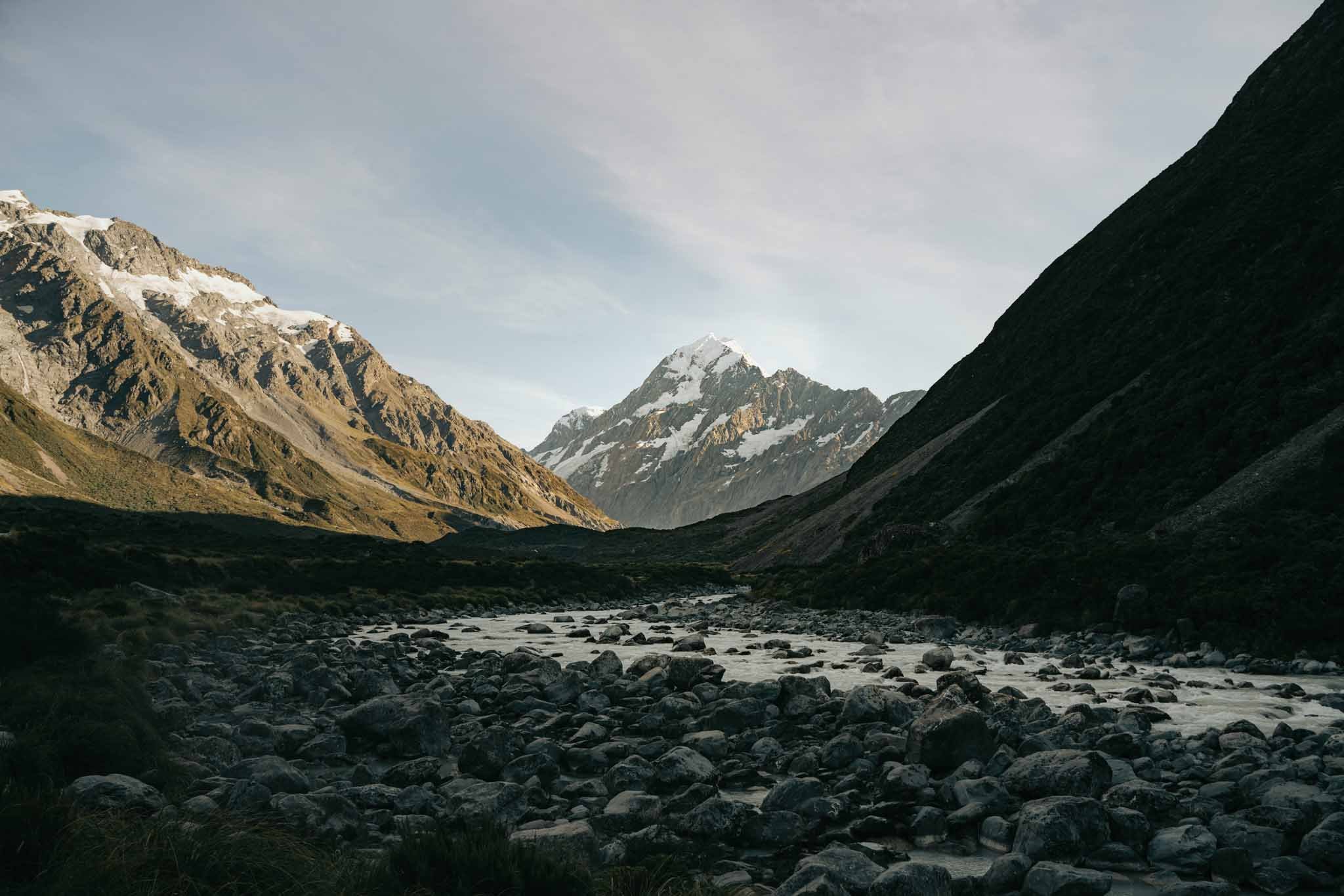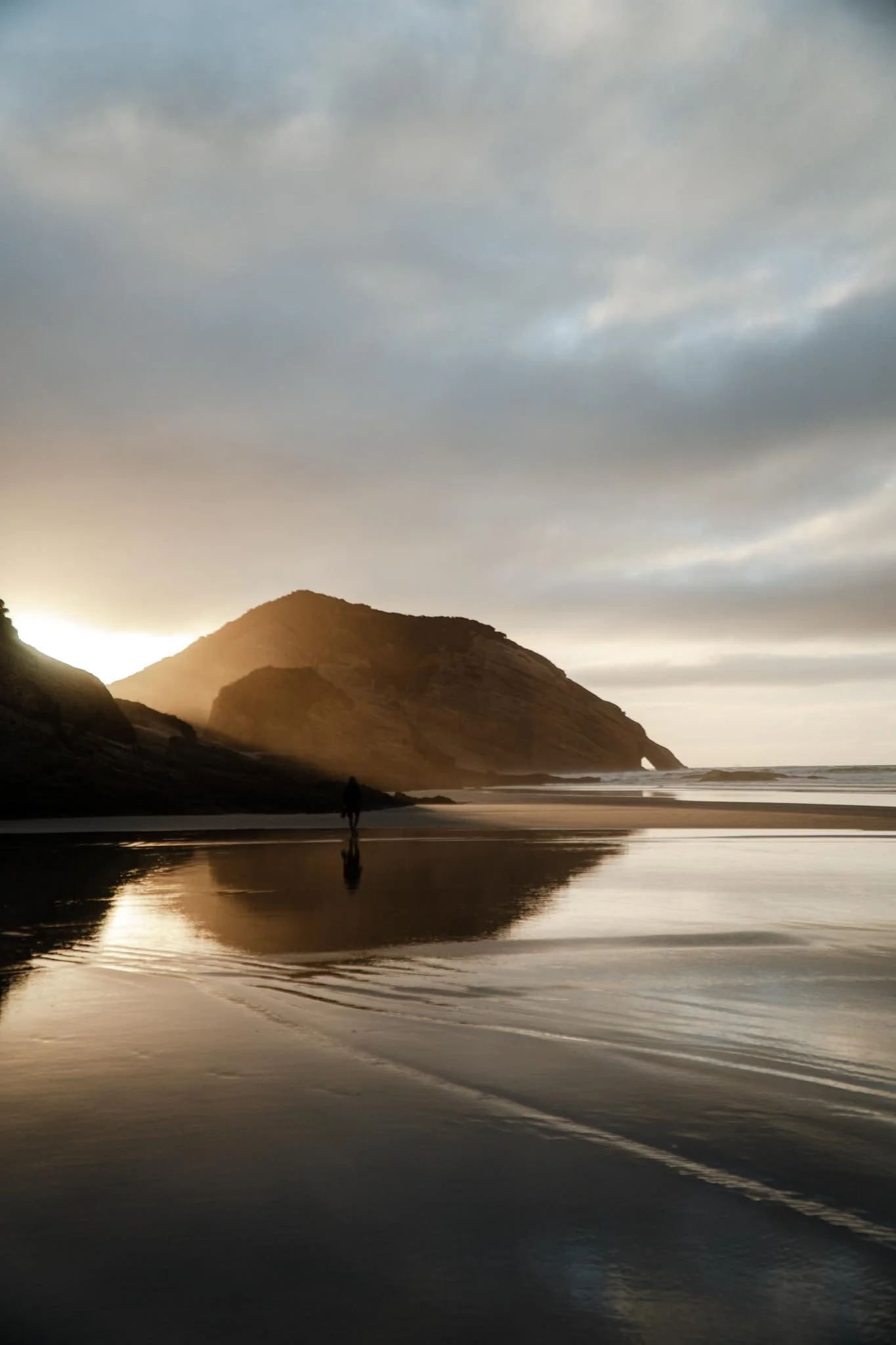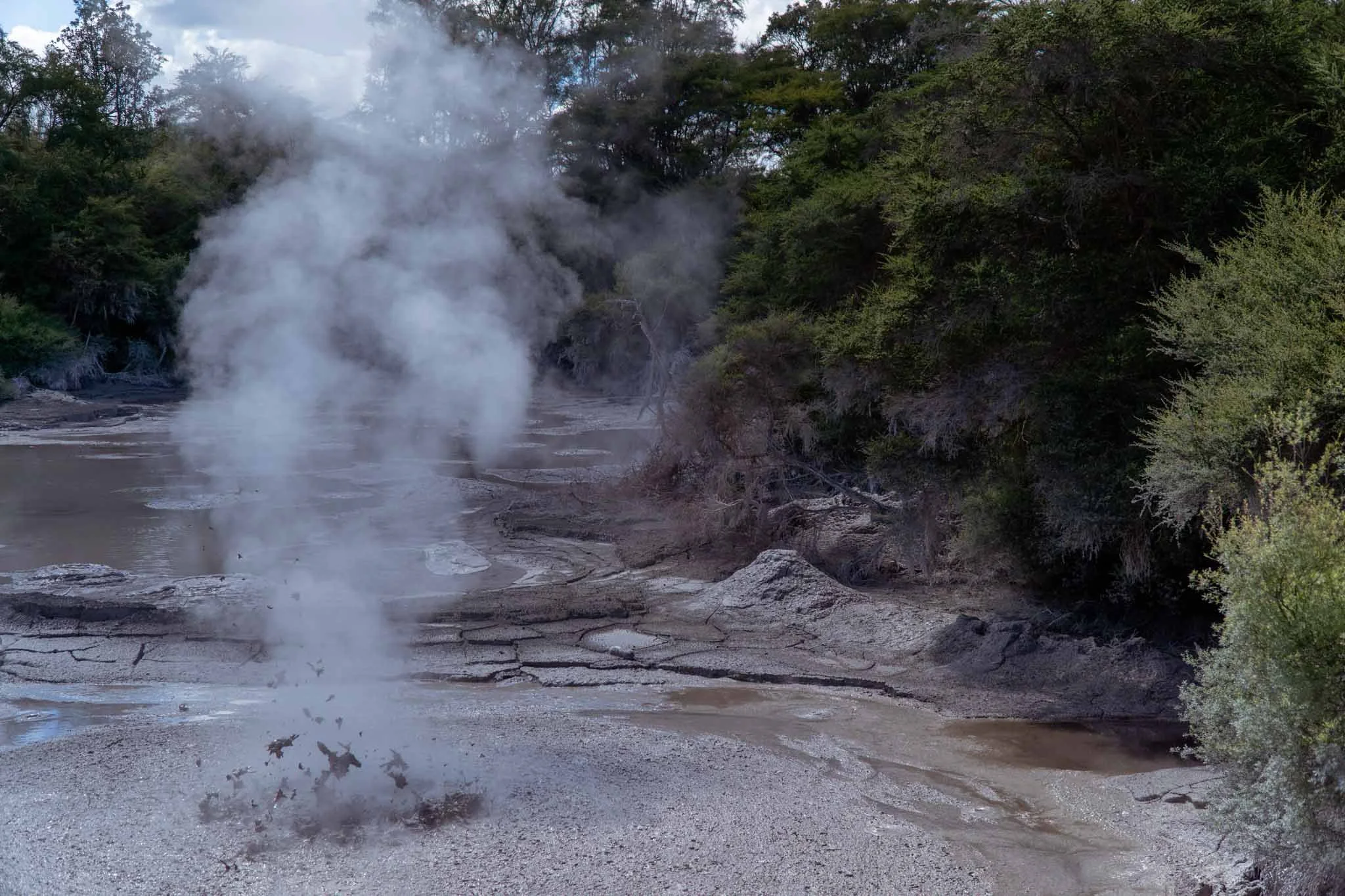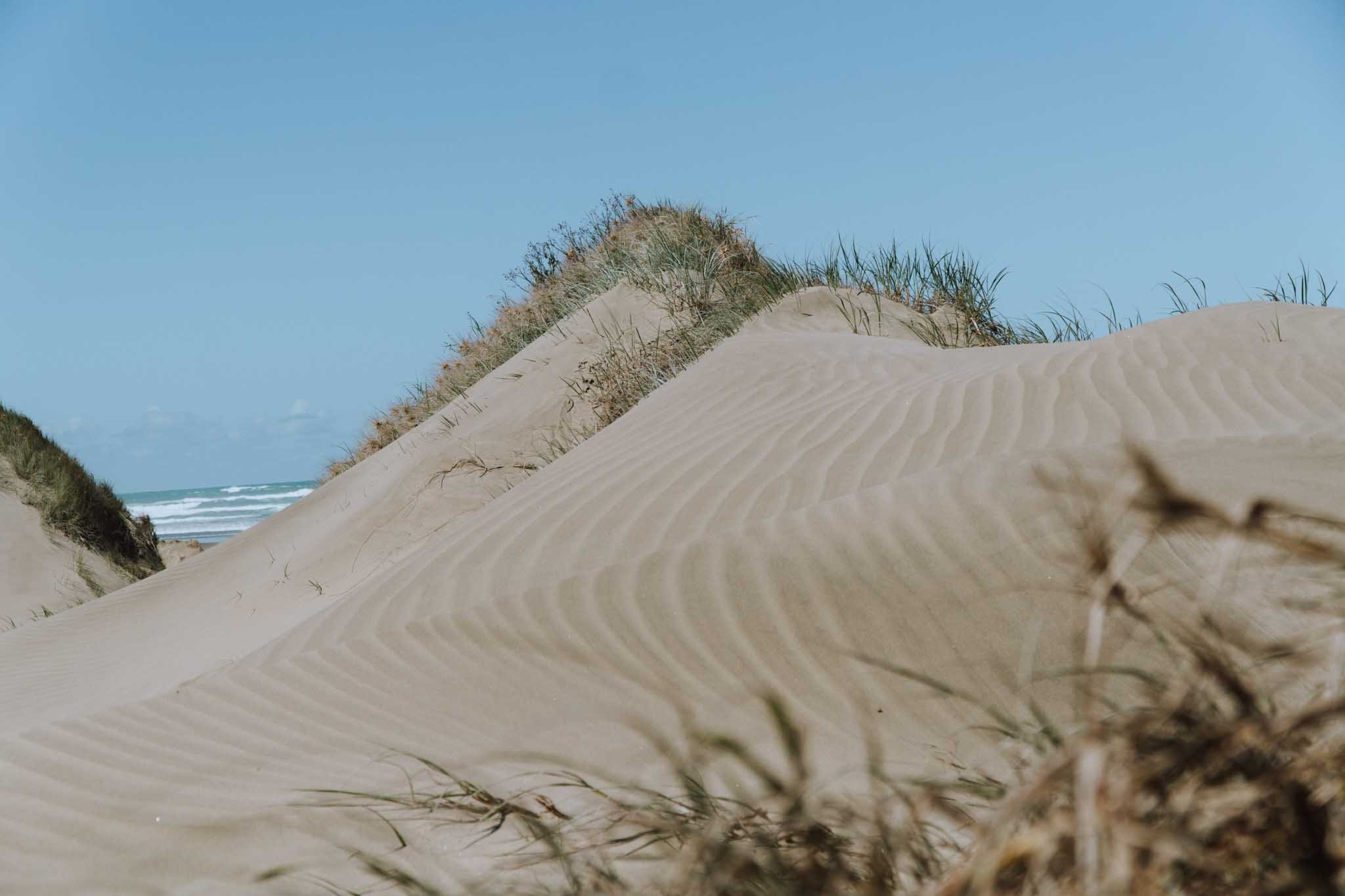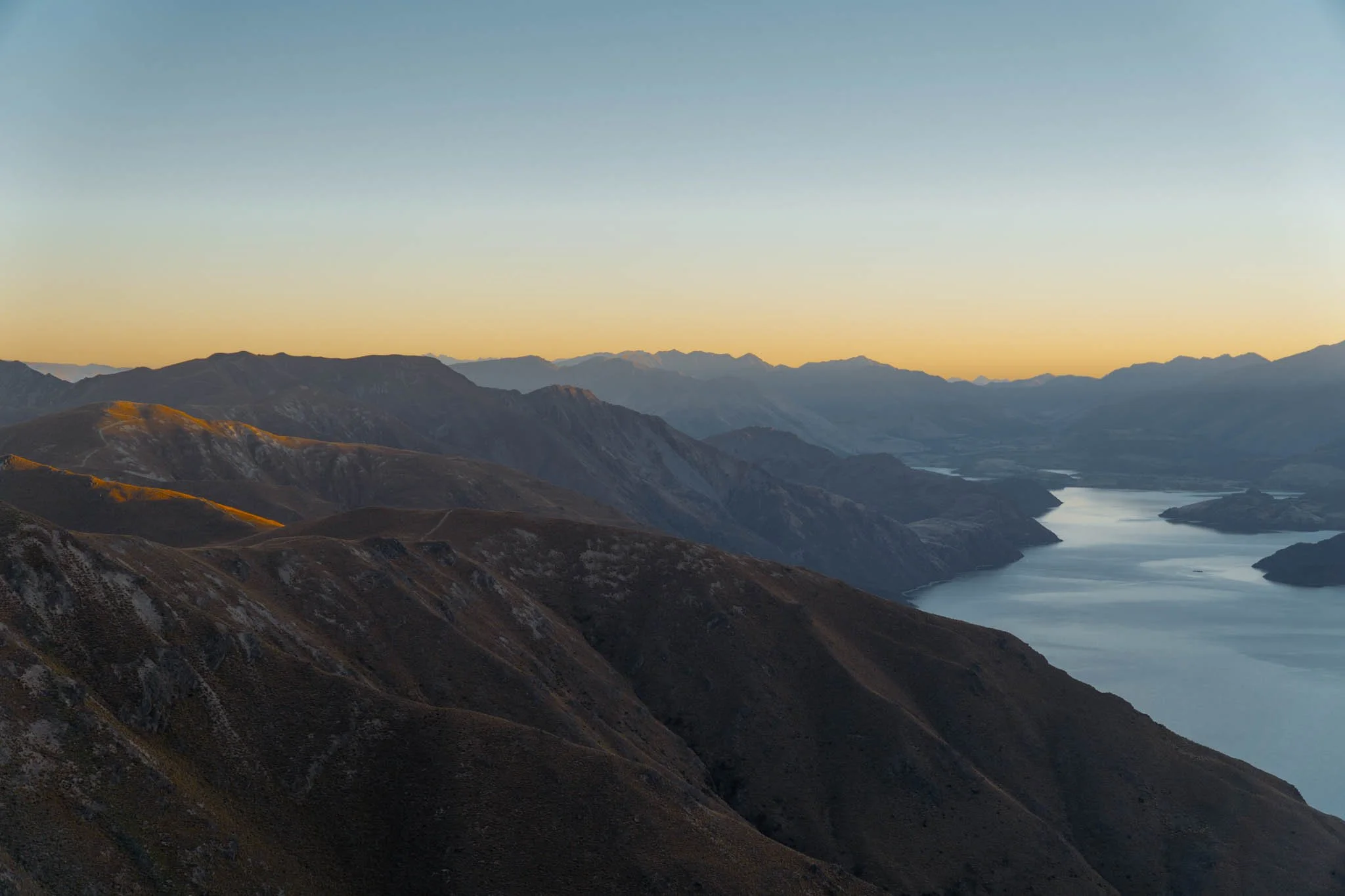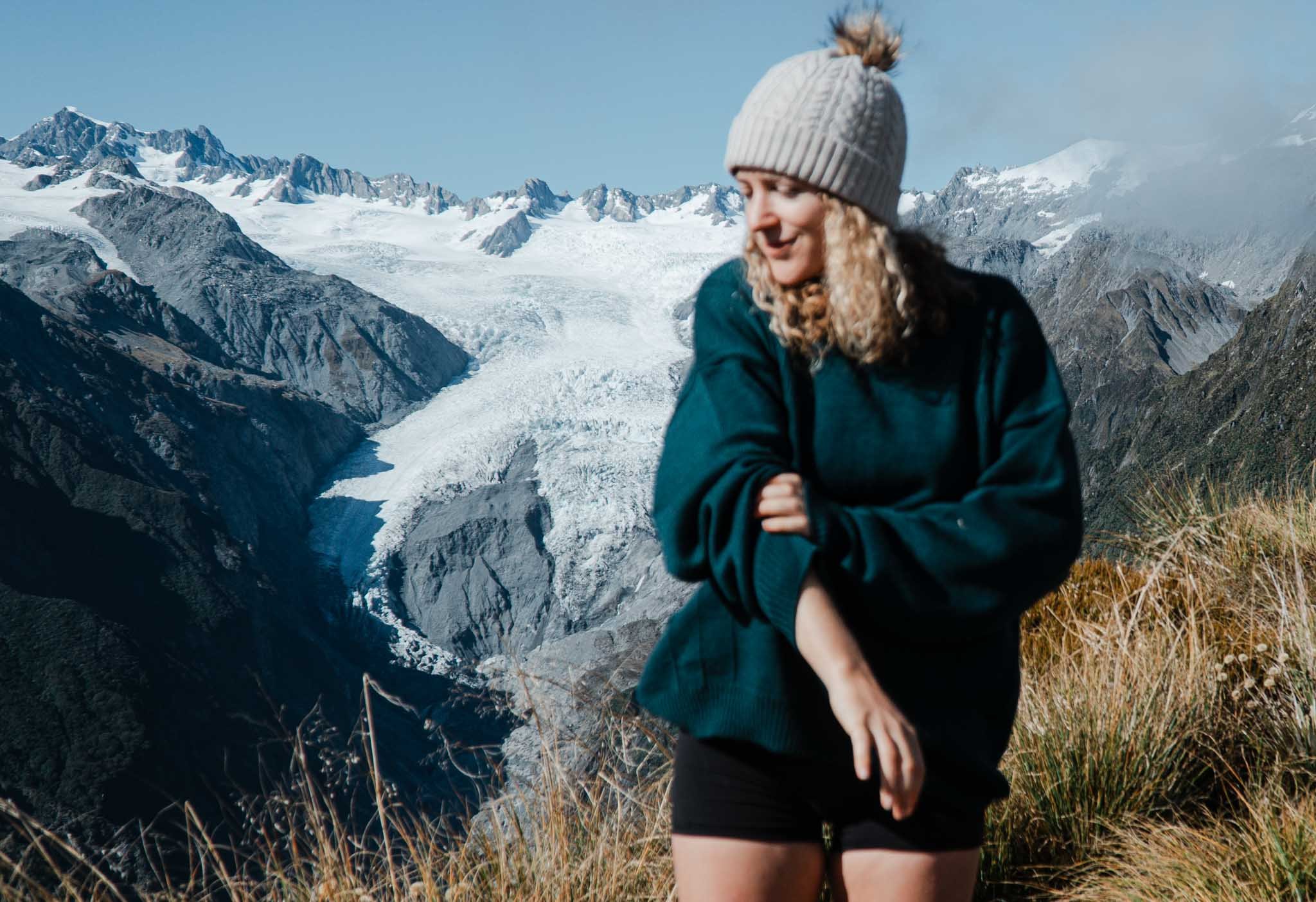North vs South: Which New Zealand island should you visit?
It’s an impossible choice, but nonetheless, one you have to make.
at the very north of the north island — spirits bay is remote and beautiful
Picking an island is like asking me to choose between cheese and chocolate. I love both — I was born near the beaches of the Coromandel Peninsula in the North Island. That will always feel like home.
But it’s hard to top the glaciers, alpine ridgelines, and epic wildernesses of the South Island. My best hiking and camping adventures have all been in the south.
If you held me up at gun point, or pulled me aside after a few drinks at a party, or just looked me in the eye and demanded that I pick one, I would say it. The South Island is better.
Aoraki/Mt Cook is a place of nearly unbelievable beauty
It’s more dramatic, has more diversity in landscapes, and has beauty everywhere you look.
But.
There are so many sandflies in the South Island, and it’s so much colder. And the North Island has so many beautiful things the South doesn’t, like volcanic cones and geothermal wonderlands, and white sand beaches that look like you’re in the Caribbean (or at the very least, the Cook Islands).
the coromandel peninsula, my home region, and home to so many beautiful beaches
If you’re planning a trip to New Zealand, you’re probably wondering how best to divide your time — if you only have time to visit one island, which one should you choose?
I’ll tell you right now, it’s hard to pick. But you might be able to narrow down the options based on your interests. And I also want to remind you that no matter where you go, north, south, east, or west, to the far reaches or the tourist centres — you’ll find beauty here.
So, here are my best recommendations for choosing between the North Island and the South Island. But I’m giving them to you with the suggestion that you don’t stress over making sure you pick the absolute best of everything.
See what you’re drawn towards — go there.
Disclosure: This page contains affiliate links, which means I may make a small commission if you buy something after clicking on those links. Thanks for your support.
Comparing both islands; the differences in a nutshell
The North Island of New Zealand is known for its geothermal activity, Maori culture, and beautiful beaches.
The South Island is famous for its stunning glaciers, fjords, and mountains. The South Island is also generally considered to be more rugged and wild than the North Island.
In general, though, both islands have a pretty incredible spread of landscapes, so choosing one doesn’t mean missing out on what the other has entirely. Take this beach below, for example. Would you be able to guess which island it’s on?
These photos are from Wharariki Beach on the west coast of the South Island. It’s one of my favourite places for a South Island sunset.
But the North Island also has these kinds of wild, windswept beaches. The only difference might be the scale; Wharariki is huge, and remote, and way out of the way.
For me, that’s a lot of the beauty of the South Island. If you really want to get away from people, you can.
Both islands are big — bigger than they might first appear. Hiring a rental car is by far the easiest way to get around. Check prices on DiscoverCars >>
Here are some suggested itineraries and road trips around the islands:
Is the North Island or the South Island better to visit?
well, the south island has this (aoraki/mt cook) which is pretty hard to beat
I can’t seem to dodge this question.
I swear, and this is 100% true, I had this page open in front of me ready to edit, in a hostel in Ahipara (Endless Summer, in case you’re wondering, which I recommend completely) and a Swiss girl sitting on the couch opposite me asked me for advice, and wanted to know which island I prefer.
I did not mention I have a whole travel website dedicated to New Zealand.
This is just something visitors naturally want to know, when they get the chance to talk to a local.
Most New Zealanders are candid about preferring the South Island, but I’m far too in love with the North to tell people to skip past it.
the north island has more of this — idyllic beaches and a kick back lifestyle (this is in the Coromandel)
Broadly speaking, if you’re drawn to culture, history, and coastal lifestyle, you should visit the North Island. If you prefer outdoor adventures and sweeping landscapes, you’ll love the South Island’s mountains, glaciers, and fjords.
Both islands have incredible wine regions, great day walks, and awesome food (although Auckland and Wellington are much more vegetarian friendly than Christchurch and Queenstown).
The South Island is generally seen as more beautiful, but in my view that’s just because geographically, the North Island and the South Island are quite different.
If I had to pick one, I would tell you to visit the South Island if you’re short on time — but the North Island is also gorgeous.
Here is my best attempt to compare both islands.
The unique attractions that make the North Island/Te Ika-a-Māui special
A coastal hike near Auckland — photo credit Miles Holden
For me, what makes the North Island stand out is the array of incredible beaches — in some places, like Rarawa Beach in Northland, the white sand is so fine it squeaks under your feet. In other places, like along the West Coast of Auckland, the beaches are black with volcanic sand.
I come from the Coromandel Peninsula, which is home to beaches which are world famous for their beauty. Cathedral Cove is a highlight, but there are other incredible beaches around for anyone willing to look.
Sunrise at Pauanui, near where I grew up. Perfect little waves for surfing.
The North Island also simmers with volcanic activity.
You can see geysers spray steam from the earth in Rotorua, witness mud pools bubbling away, and soak in naturally hot rivers near Taupo.
As well as hot pools, the geothermal activity creates colourful pools, like at Wai O Tapu near Rotorua and the emerald lakes you see on the Tongariro Crossing.
around rotorua, mud boils up from the ground
This kind of geothermal activity is one of the most unique aspects of New Zealand, so it’s a huge drawcard for the North Island.
The volcanic legacy of the North Island is everywhere. Lake Taupo is the caldera of the Taupo volcano. Mount Taranaki and the volcanoes in Tongariro National Park make for incredible hiking.
emerald lakes on the tongariro crossing, in the north island
Around Auckland — New Zealand’s largest city — you can also see prominent volcanic cones, like Rangitoto Island on the horizon.
The volcanic activity and warmer climate means the North Island was more attractive to Maori people when they first arrived. Hot water that bubbled up out of the ground, and a lush environment that never got too cold, were more appealing than the harsh winters of the South Island.
That legacy of those early Maori settlers is that today, Māori culture is more visible and more accessible in the North Island.
Some of the most important Māori cultural sites are in the North Island.
the far north of the north island has both massive sand dunes and huge cultural significance — Cape Reinga, the northernmost tip of the island, is the “jumping off point” for Maori spirits returning to their homeland.
The Waitangi Treaty Grounds in Northland are a key part of New Zealand’s history. Cape Reinga at the very north of the North Island is the place where Maori spirits are said to depart for their traditional homeland. And in Rotorua, you can experience Maori villages, cultural performances, and traditional feasts.
Te reo Māori — the Māori language — is also more widely spoken on the North Island than on the South Island.
You’ll notice Māori cultural influences more in the North Island, where there are more Māori place names.
In contrast, many place names in the South Island are still British.
That being said, the South Island has its own unique Māori culture.
Pounamu, the traditional Māori greenstone which makes an excellent souvenir, is sourced only in the South Island. This makes the South Island home to incredible pounamu carvers and artists.
A few North Island highlights
Waitomo Glowworm Caves: See thousands of glowworms that light up the walls like stars. You can see glow worms throughout New Zealand, but the Waitomo cave systems are a spectacular setting for seeing them. Check out this family run cave trip as an alternative to the bigger, more commercialised outfit.
Visit the real-life movie set of Hobbiton from the Lord of the Rings and Hobbit trilogies, complete with hobbit holes and the Green Dragon Inn.
Visit the Orakei Korako Geothermal Wonderland in between Rotorua and Taupo.
Tongariro National Park: Hike the famous Tongariro Alpine Crossing, a challenging but rewarding 19.4 km trek through volcanic landscapes and stunning views.
See Tane Mahuta, the largest living kauri tree in New Zealand, in the Waipoua Forest in Northland.
Road trip around the Coromandel Peninsula: Discover hidden bays and see Cathedral Cove from the water
So, should you visit the North Island?
If you have two weeks you can definitely see a little of the North Island and more of the South, with a flight linking the two islands and saving you some time.
With three weeks, you can road trip from North to South (or vice versa). I would probably recommend spending at least two of those weeks in the South Island.
But, to be completely and utterly honest, you could also give the North Island a miss.
The attractions that make the South Island/Te Waipounamu special
Sunset at Isthmus Peak, near Wanaka
In contrast to the North Island, the South Island is more mountainous. As a North Islander, I’m always left awestruck by the sight of the high, snow-topped mountains.
The Southern Alps dominate the landscape, and glaciers, fjords, and pristine lakes are strung throughout the South Island’s mountains.
The South Island’s scenery is more dramatic, with everything from lush rainforest on the West Coast to the golden alpine region near Lake Tekapo and Aoraki Mount Cook National Park.
driving to aoraki/mount cook is one of the best road trips in new zealand
the hooker valley walk has to be the best day walk in the country
The South Island has far fewer people than the North Island, so it often feels more remote and wild. This also means the driving distances between towns are much greater.
the South Island has fewer large cities. Many of the towns and cities on the South Island have a more relaxed and laid-back lifestyle, with a focus on outdoor activities such as skiing, hiking, and fishing.
The South Island has a rich gold-mining history, and many of the towns and cities in the region were founded during the gold rush of the late 1800s.
There’s also a long history of deer hunting in the South Island, which is partially what led to the number of backcountry huts spread throughout the Southern Alps.
You’ll see a lot of people dressed in camoflauge hunting gear, and hunting themed bars and restaurants, like the Five Stags Restaurant in Cromwell. South Island restaurants, like those in Queenstown, also often serve wild shot deer.
The South Island is an epic destination for hiring a campervan and going on a road trip. There are many stunning campgrounds to choose from and you can really feel like you’re immersed in the landscapes.
The North Island has beautiful coastal hikes and walks through broadleaf forest.
However, the South Island has more opportunities for climbing mountain peaks and enjoying alpine tops. The sheer variety of landscapes in the South Island, from the Southern Alps, to the Marlborough Sounds and beaches of Abel Tasman, make it an incredible place for hikes.
I personally prefer hiking in the South Island, as the mountains are more epic and the scenery is incredible — you can hike to see glaciers, alpine lakes, and snowy peaks.
The North Island is great for surfing, camping, and enjoying beaches and water activities.
Some of the South Island’s must sees include:
Fiordland National Park: Take a scenic cruise through Milford Sound, one of the most beautiful natural wonders in the world.
The South Island is home to 7 out of 10 of the Great Walks — check out the Routeburn or Abel Tasman Track, both of which have great day walk options.
Franz Josef and Fox Glaciers: Hike or take a helicopter tour to see these stunning glaciers up close.
Aoraki/Mount Cook: Visit Aoraki/Mount Cook to hike the Hooker Valley Track and see New Zealand’s highest mountain.
Abel Tasman National Park: Explore the golden beaches, crystal-clear waters, and lush forests of this stunning coastal park.
Seeing the whales and dolphins near Kaikoura, which is an epic place for viewing marine life.
The weather in the North Island versus the South Island
Wild weather near Wellington
The two islands have different climates, with the North Island being warmer and more humid, while the South Island is cooler and drier.
Summer temperatures on the North Island can reach up to 30°C, while the winter temperatures tend to hover around 10°C.
I will quite often go for an ocean or river dip in the middle of winter in the North Island, but I’m not brave enough to go for a winter swim in the South. The water temperatures are much colder in the South Island.
The South Island has a cooler, more temperate climate. Summer temperatures averaging around 20°C and winter temperatures averaging around 5°C.
The hottest and the coldest days have been recorded in the South Island.
If you visit the North Island, you’re more likely to need wet weather gear. In the South Island, you’ll need warmer layers.
Even the weather within each island can vary a lot, though.
In Fiordland or on the West Coast of the South Island, there’s a good chance you’ll get rain no matter what time of year you visit. These regions are basically rain forests, which makes them incredibly lush and green, with misty mountains and lots of waterfalls.
In both islands, the weather can change quickly, so you need to pack layers.
Which island is better in winter?
Although both islands are great all year round, the South Island might be my favourite island to visit in winter.
The weather in the South Island tends to be more settled in winter, so even though it’s colder you can get bright, clear days.
The North Island in winter tends to be very wet and grey.
It does snow in the South Island in winter, but this adds to its beauty.
I’m not into snow sports (although if you are, Queenstown and Wanaka have epic ski fields) but I love hiking through snowy landscapes. Even though a lot of alpine areas are inaccessible in winter, there are still some amazing walks to do.
Nature and wildlife
An oyster catcher on a North Island beach
Kea are the South Island’s alpine parrots
Both the North and South Islands have plenty of opportunities to see New Zealand’s wildlife.
The North Island has lush forests with kauri trees and coastal pōhutukawa trees, which are iconic symbols of New Zealand.
If you get the chance to head to Northland, I highly recommend stopping by the Waipoua forest to see Tane Mahuta, the largest living kauri tree, and the impressive kauri forest at the Trounson Kauri Park.
The North Island is home to native birds like kiwi, tui, and kereru. It also has a number of marine mammals, such as dolphins and whales.
You can take a whale watching tour from the centre of Auckland, and visit islands in the Waitematā Harbour to see rare birds on island sanctuaries.
On Tiritiri Matangi, an island in Auckland’s harbour, you can see little blue penguins, tieke/saddlebacks, and takahe.
There are also some very cool seal colonies in the North Island. My favourite is out by Cape Palliser near Martinborough. You can almost walk through the middle of the colony, and the rocks where they hang out.
The South Island is known for its penguins, seals, and the whales that migrate up the coast. It also has a number of unique bird species, such as the kea — the world’s only alpine parrot — and the exceptionally rare kākāpō.
Both of these bird species only live in the South Island.
One of the coolest wildlife experiences I’ve had in the South Island is spotting Hector’s dolphins. These tiny dolphins are found in the waters around the South Island, and I’ve seen them while walking the Hump Ridge Track in Fiordland and from Okarito on the West Coast.
They forage in fairly shallow water close to the shore, so you can even jump in the waves with them.
Kaikoura also offers unique dolphin spotting opportunities, and you can even go swimming with seals.
One of the things I love most about the South Island is the alpine regions. You can hike up to alpine tops and walk along mountain ridges for epic views — the North Island doesn’t really have this.
On the Kepler Track for example, there is almost a whole day of walking along the spine of mountains in Fiordland National Park. The views from up there are unparalleled.
Resources for planning your New Zealand trip
A little quick fire round up of some of my top planning websites and resources.
DON’T FORGET: Immigration New Zealand’s information on the NZeta
MONEY: I use Wise, including in New Zealand (I love the way it helps me track my spending)
TRAVEL INSURANCE: I recommend World Nomads (it’s what I use outside of New Zealand — when I’m here, I only occasionally get a cheap plan to cover rental cars).
RENTAL CARS: RentalCars.com for comparing the prices of rental cars
RENTING A CAMPERVAN: Motorhome Republic for comparing the prices of campervans.
FINDING ACCOMMODATION: Booking.com is my preferred website for finding hostel or hotel accommodation in New Zealand, but it’s also worth checking Vrbo when you’re looking for places to stay outside of towns (some of the best places to stay are more remote). Canopy Camping is great for a special stay.
BOOKING ACTIVITIES: Viator is an easy way to book tours (as a disclosure, I have written for them before!).
FINDING CAMPGROUNDS: Rankers is my favourite app for finding campgrounds in New Zealand (another great app is Gaspy for saving money on petrol)
SIM CARDS: I recommend getting a Skinny SIM card when you arrive
FIND WALKS AND HIKES: The DOC website is the best resource for all trails, scenic campsites, and mountain huts.
CHECKING THE WEATHER: Metservice is New Zealand’s main weather site, but NIWA provides good mountain forecasts if you’re going hiking. I also love YR.
FIND RESTAURANTS: First Table is a great site which lets you book meals for 50% off.
KEEP YOUR SANITY: TripIt — an all-in one travel organiser for when the number of bookings starts to get overwhelming.
FOR TAILORED ADVICE: Book a call with me! If you need feedback on your itinerary or personalised travel tips, feel free to put some time in my calendar and let’s chat.
Thanks for reading this far! I hope this has helped show some of the key differences between the North and South Islands.
If you’re in the middle of planning your New Zealand trip, you might find these articles helpful as well:
AUTHOR BIO
I’m a freelance travel writer from New Zealand with bylines in National Geographic Travel, Conde Nast Traveler, Travel + Leisure and more.
I’ve travelled up and down beautiful Aotearoa and I love sharing my recommendations for the best places to visit in New Zealand.

